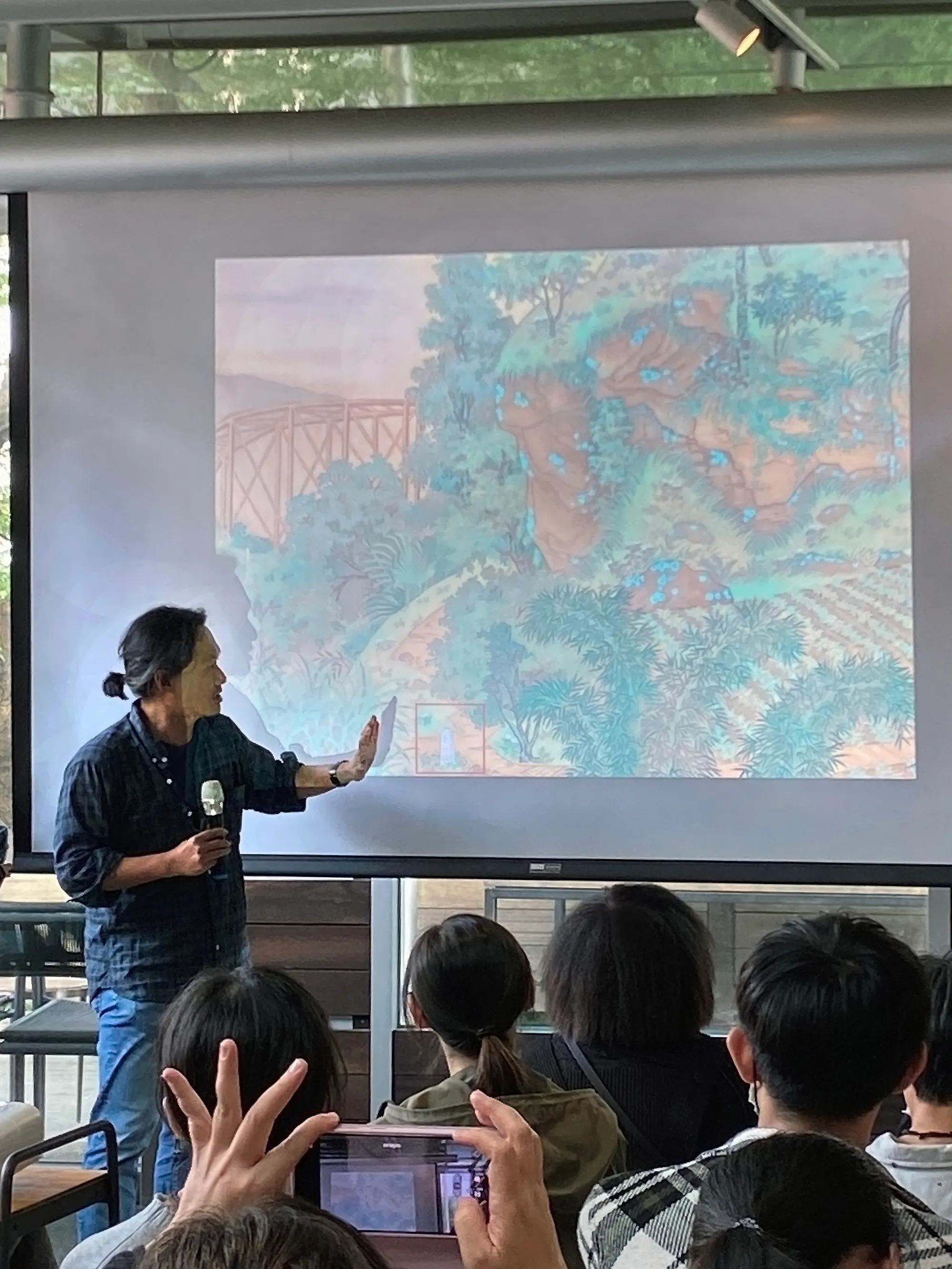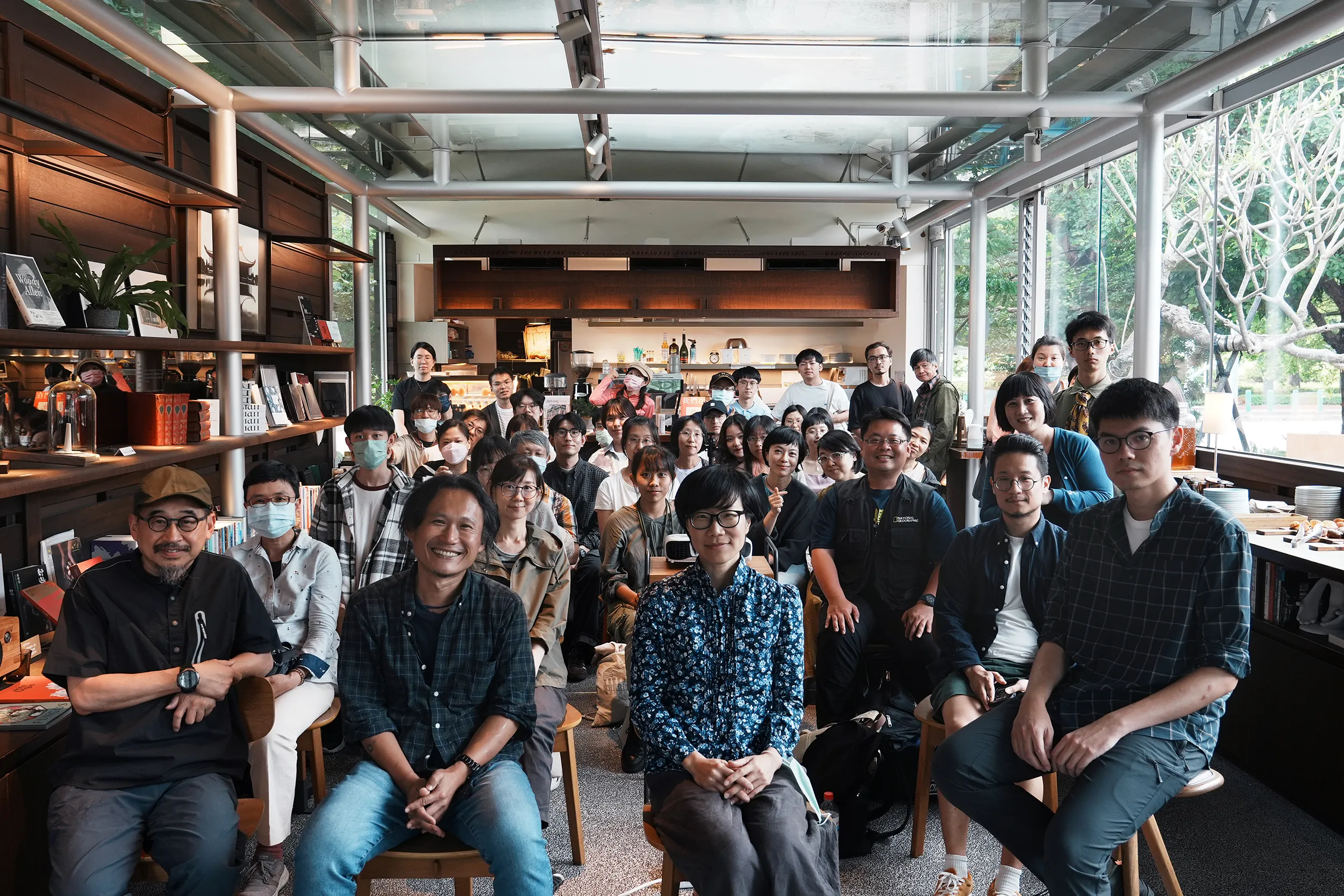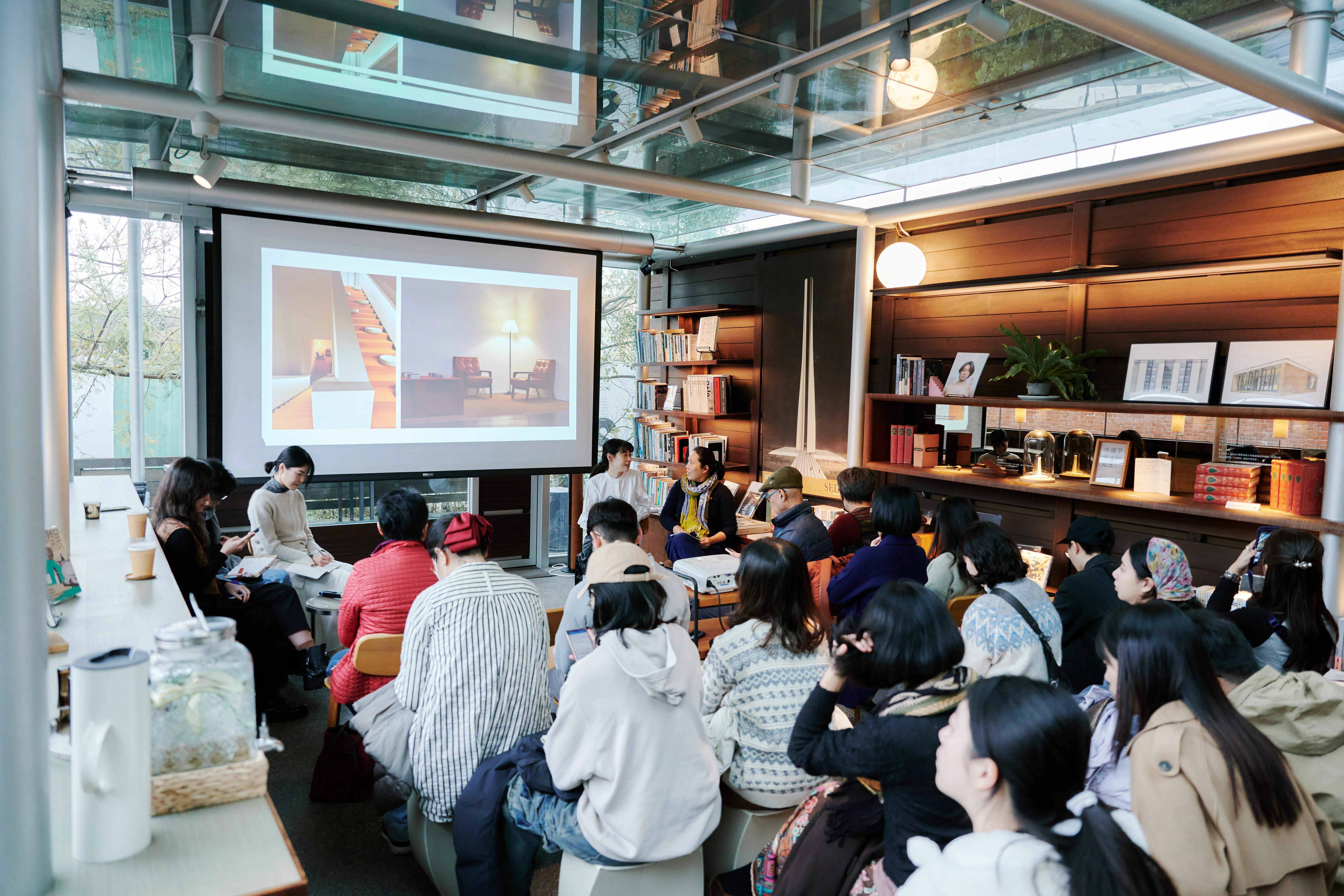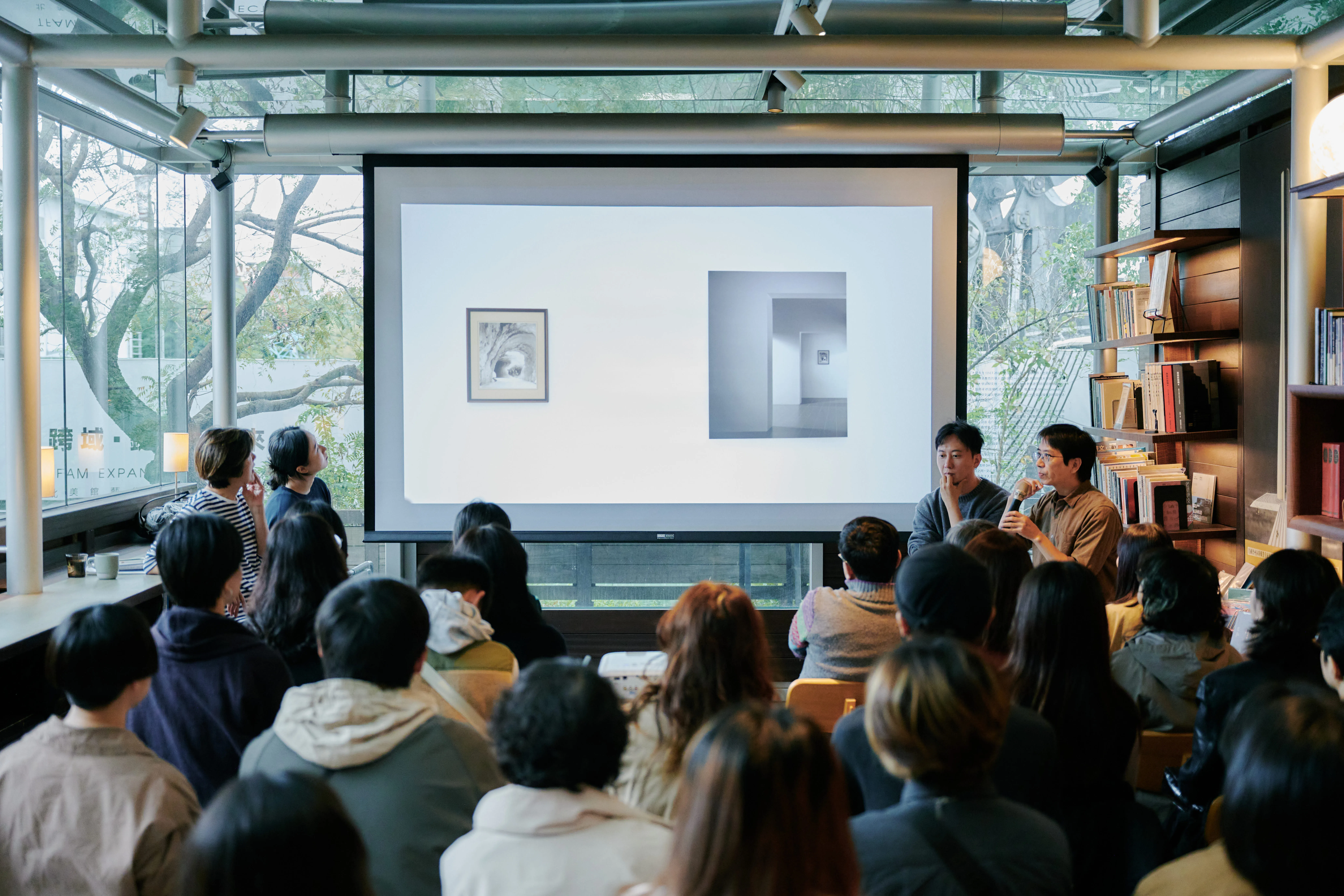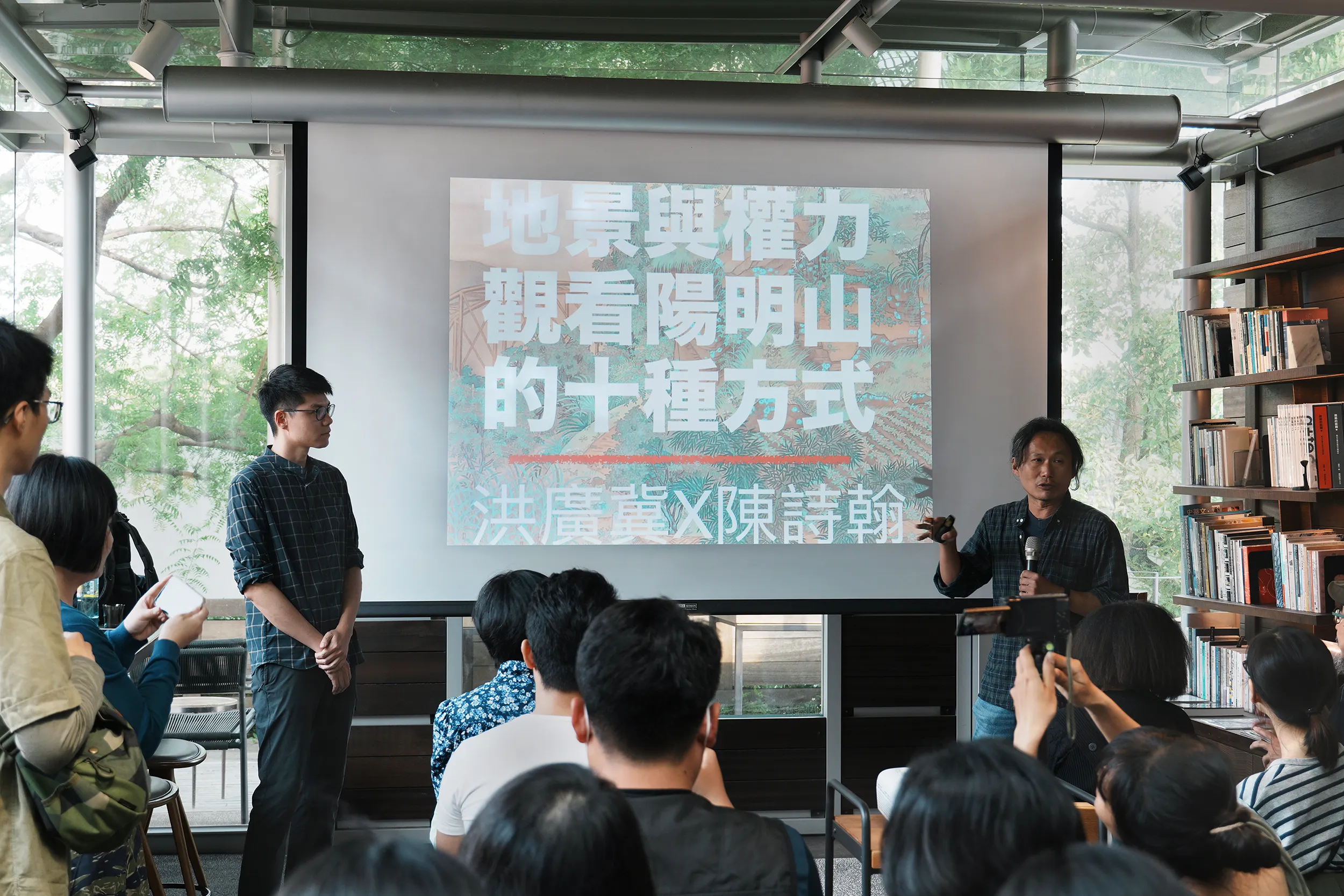
Special Programme| Landscape and Power: Ten Ways to View Yangmingshan
Speakers
HUNG GUANG-CHEI, ASSOCIATE PROFESSOR, DEPARTMENT OF GEOGRAPHY, NATIONAL TAIWAN UNIVERSITY
locations
Wang Daishui Shuxuan (No. 153, Section 3, Zhongshan North Road, Zhongshan District, Taipei City)
fees
$150 (Paid upon arrival, drinks and snacks are available on site)
Event Content
Beginning in November 2023, Associate Professor Hung Guangji of the Department of Geography at the National Taiwan Museum will organize the special exhibition “Forest Field: The Crossroads of Power” for a period of one year, mainly featuring three historical paintings depicting the natural resources, ethnic relations, and national power that are intertwined in Taiwan's forest landscape.
In addition to the ongoing Tenmu Shuido Festival in the second art season, Wang Daishi Shuxuan, located in the waterway basin, also participated in a dialogue exchange. The second series of talks was specially invited by Professor Hung Kwang-ji to bring the natural landscape perspective in the special exhibition “Forest Field: The Boundary of Power”. He opened a dialogue with the theme of Yang Ming Shan Art Season “Rishan Limai”, leading the audience to understand the natural forests of Yangming Shan, under the influence of the development of the country, and in different periods of history Period, what kind of transformations the landscape has in its meaning.
During the lecture, Professor Hung Kwang-ji will select ten historical maps/paintings of the Yangming Shan, Yuanshan and Datuen Shan areas to lead the public to rediscover the landscape of the Asen Mountains in the Dayang Mingshan area through the artistic perspective of historical paintings. It contains Kuo Xue Hu's 1928 painting “Near Yuanshan”. In the lower left corner of the painting, there is a pointed obelisk inscribed “No. 4” on the security forest monument. And what kind of historical development does this security forest landmark reveal?
From security forest landmarks to national development, Professor Hung will lead us to understand the historical significance of the landscape of the Daeyang Mingshan area and the changes in national power that are implied in them. Let us reflect on the interaction of man with the natural environment through the dialogue between art and nature.
Event Review
From the formation of the island of Taiwan a million years ago, the Qing dynasty's banqueting system, the security forest of the Jiji period, and the road to the National People's Government's relocation, Professor Hung told the story of the prototypes approaching the current Yangmingshan National Park. In the process, many wonderful graphic materials were shared, of which the 1928 painting “Near Yuanshan” by the artist Guo Xue Hu was particularly interesting. The scene depicted in the painting can be seen as an ingenious combination of man and nature, but the “fourth landmark” in the hidden corner of the screen reveals the fact that the Bao'an Forest was overgrown at the time, and after examination it was confirmed that the landmark was a shrine forest. Professor Hung's analysis of this painting gives a definition and understanding of the beauty of the landscape of Datuen Shan, where one can see the “natural” state in which people are intertwined with the natural environment. The meaning of “natural” and “natural” means a forest without a trace, and “natural” means that people and the environment somehow coexist in close harmony with each other, with the exception of human elements. At the same time, there are countermeasures in the policy between the public and the government, opening one eye and one eye is one of the reasons for this. Such a mixed landscape is perhaps what Guo Xue Lake wants to convey.
SHIHAN CONTINUED TO EXPLORE THE EVOLUTION OF THE DAUTUN VOLCANO UNTIL THE OFFICIAL ESTABLISHMENT IN 1985 OF YANG MING SHAN NATIONAL PARK. As a family member who has lived in the Yangmingshan area for generations, Shihan studied the information gathered to discuss how this natural forest has changed and different periods of history under the influence of the development of the country. He pointed out that the differences between the US and Japan's definitions of national parks were also reflected in the discussion at the time of planning — the former defined as “uninhabited wilderness” as “a landscape that contains people.” The Yangmingshan region, due to the special landscape and the rapid urban expansion of the Taipei Basin, could not apply the same American approach to planning, rather than Japan's. After many years of changes in the system of forest management agencies, the scope and direction of the construction of national parks, and the role of numerous management agencies and local residents, central and local governments, it is the Yangmingshan National Park that people are familiar with today.




